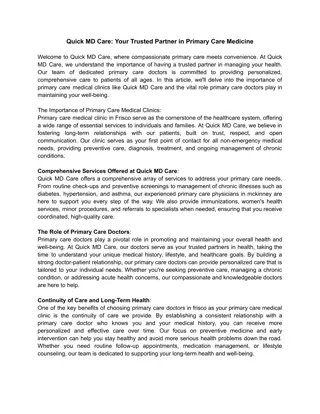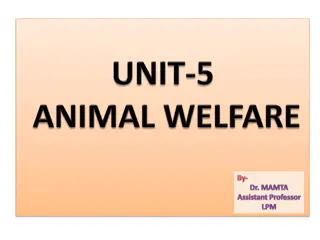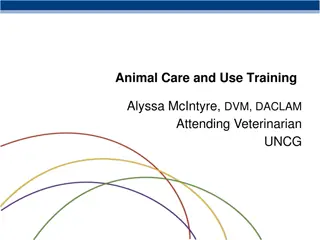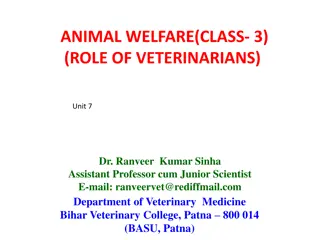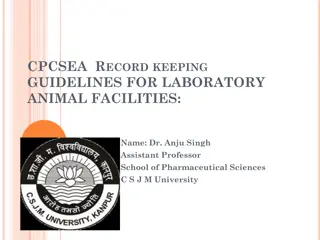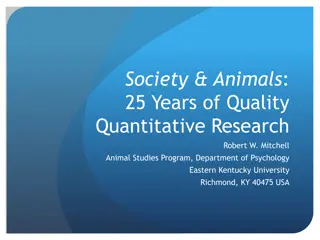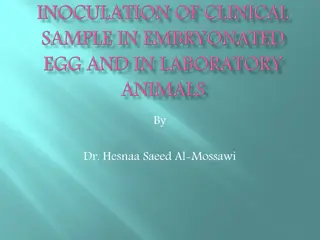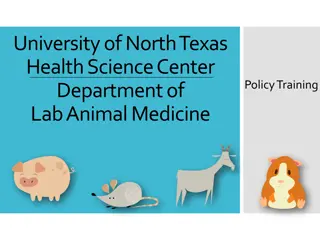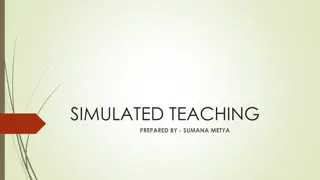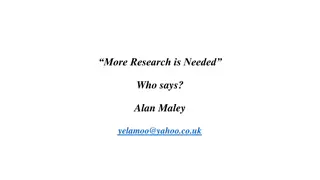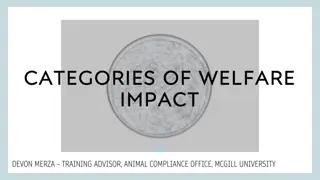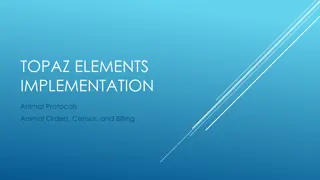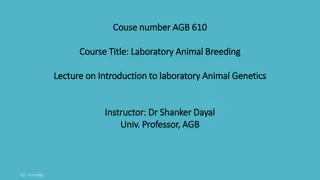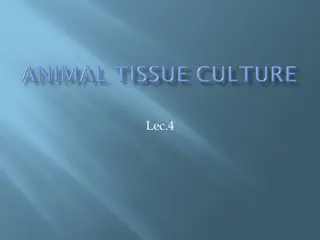Animal Care and Use in Research and Teaching
Exploring the reasons for using animals in research, the limitations of human subjects, and the importance of studying animals for scientific progress. The selection of animal species, considerations, and ethical framework for animal studies are highlighted in this comprehensive guide.
Download Presentation

Please find below an Image/Link to download the presentation.
The content on the website is provided AS IS for your information and personal use only. It may not be sold, licensed, or shared on other websites without obtaining consent from the author.If you encounter any issues during the download, it is possible that the publisher has removed the file from their server.
You are allowed to download the files provided on this website for personal or commercial use, subject to the condition that they are used lawfully. All files are the property of their respective owners.
The content on the website is provided AS IS for your information and personal use only. It may not be sold, licensed, or shared on other websites without obtaining consent from the author.
E N D
Presentation Transcript
INTRODUCTION TO ANIMAL CARE AND USE
TABLE OF CONTENTS Part 1: Animals as Research Models Part 2: Animal Welfare Matters Part 3: The Institutional Animal Care and Use Committee (IACUC)
Part 1: ANIMALS AS RESEARCH MODELS
Why are animals used in research and teaching? To learn about general principles that apply to many species of animals To learn about the specific species of animal being studied To learn principles that can be used in human medicine, but that cannot be studied with human subjects
Why not use human subjects? Often we can, and do. Ideally we want to isolate, and manipulate, just one variable, and keep everything else the same. This is the best way to do science. It often is impossible with human subjects. Some necessary manipulations cannot be done with human subjects, such as injection of experimental drugs, gene mutation, removal of organs, or euthanasia.
Why use animals at all? Some things can be studied in vitro, with cells or tissues in a dish. Sometimes this is the best approach. The cells or tissues had to come from somewhere though either an animal or a human. Computer simulations can be used for some things. But before a computer program is designed, scientists need to learn the basics from animal studies. Animals are full of surprises. In a living animal, multiple physiological systems interact, and sometimes this interaction produces results that could not be predicted from in vitro or computer studies.
Which animal species should we study? If we re interested in general principles that apply to all or most animals, we choose the least sentient species that has the characteristic we are studying. This means the species with the least conscious awareness. If we re interested in a particular species or type of animal, we choose that species or type. If we re interested in applications to human medicine, we choose the species that is closest to humans in the characteristic we are studying. Species with short life spans are useful for studies that involve progression from one life stage to another. Availability and cost also are considered, along with ease of housing and handling. Often it helps to choose a species that already has been studied thoroughly.
References Contemporary Science, Values and Animal Subjects in Research, North Carolina State University http://ori.dhhs.gov/education/products/ncstate/in dex.htm
Part 2: ANIMAL WELFARE MATTERS
Seven principles for the care and use of animals used in testing, research, and training The U.S. Interagency Research Animal Committee prepared seven principles for the care and use of animals used in testing, research, and training. The committee's principal concerns are the conservation, care, and welfare of research animals.
Seven principles for the care and use of animals used in testing, research, and training 1) The transportation, care, and use of animals should be in accordance with the Animal Welfare Act and other applicable federal laws, guidelines, and policies. 2) Procedures involving animals should be designed and performed with due consideration of their relevance to human or animal health, the advancement of knowledge, or the good of society.
Seven principles for the care and use of animals used in testing, research, and training 3) The animals selected for a procedure should be of an appropriate species and quality and the minimum number required to obtain valid results. Methods such as mathematical models, computer simulation, and in vitro biological systems should be considered. 4) Proper use of animals, including the avoidance or minimization of discomfort, distress, and pain when consistent with sound scientific practices, is imperative. Unless the contrary is established, investigators should consider that procedures that cause pain or distress in human beings may cause pain or distress in other animals.
Seven principles for the care and use of animals used in testing, research, and training 5) Procedures with animals that may cause more than momentary or slight pain or distress should be performed with appropriate sedation, analgesia, or anesthesia. Surgical or other painful procedures should not be performed on unanesthetized animals paralyzed by chemical agents. 6) Animals that would otherwise suffer severe or chronic pain or distress that cannot be relieved should be painlessly killed at the end of the procedure or, if appropriate, during the procedure.
Seven principles for the care and use of animals used in testing, research, and training 7) The living conditions of animals should be appropriate for their species and contribute to their health and comfort. Normally, the housing, feeding, and care of all animals used for biomedical purposes must be directed by a veterinarian or other scientist trained and experienced in the proper care, handling, and use of the species being maintained or studied. In any case, veterinary care shall be provided.
The 3 Rs: an easy way to remember and apply the seven principles Replacement - Animals may be used only if the investigator's best efforts to find a replacement by which to obtain the required information have failed. Reduction - The fewest animals appropriate to provide valid information and statistical significance should be used. Refinement - The most humane, least invasive techniques must be used with the goal of minimizing pain and/or distress.
Replacement Replacement, the first of the 3R's, is defined as the substitution for conscious living higher animals of insentient material. There are a number of alternative methods that can be used to replace the use of live animals in either all or part of a project. Replacement may be relative, where animals are still required to provide cells or tissue, but experiments are conducted in vitro: tissue culture perfused organs tissue slices cellular fractions subcellular fractions These methods are well-suited to studies at the tissue, cellular or subcellular level and, in these circumstances, can be cost-effective and time-saving. They also provide a level of knowledge that complements studies in whole animals.
Reduction The goal of reduction, the second of the 3R's, is to reduce the numbers of animals used to obtain information of a given amount and precision. To achieve this: studies are designed to be scientifically and statistically valid only the minimum numbers of animals are used studies should not be repeated unnecessarily. There are two important caveats: the principle of reduction of numbers of animals should not be applied at the expense of greater suffering to individual animals the number of animals used must satisfy statistical requirements - neither too few nor too many. Remember - if reducing the numbers of animals makes it impossible to reach a valid conclusion from the experiment, this does NOT achieve the goal of Reduction. To proceed with such an experiment is inherently unethical.
Refinement The third of the 3R's Refinement - is any decrease in the incidence or severity of 'inhumane' procedures applied to those animals that still have to be used. There are two key issues: 1) To assess the impact of any procedure or condition on the well-being of the animal. 2) To develop strategies to eliminate or minimize that impact.
References U.S. Department of Health and Human Services, Office of Extramural Research National Institutes of Health, Office of Laboratory Animal Welfare, Public Health Service Policy on Humane Care and Use of Laboratory Animals http://grants.nih.gov/grants/olaw/references/phs pol.htm Guide for the Care and Use of Laboratory Animals http://www.nap.edu/catalog.php?record_id=129 10
Part 3: THE INSTITUTIONAL ANIMAL CARE AND USE COMMITTEE (IACUC)
The IACUC An Institutional Animal Care and Use Committee (IACUC) is required by federal law for all institutions that use animals in research, teaching, and testing. The IACUC has a key oversight role, including the review and approval of animal use activities, and inspection of animal facilities. Faculty, staff, and students are responsible for understanding and following the regulations, as well as institutional policies, governing animal care and use.
IACUC requirement In 1985 the U.S. Congress passed two laws requiring an IACUC at institutions using animals: Health Research Extension Act Amendments to the Animal Welfare Act, which originally was created in 1966 Both laws led to statutory requirements for the composition and responsibilities of the IACUC.
IACUC membership requirements An IACUC must include at least one of each: Veterinarian Practicing scientist experienced in research involving animals Non-scientist An individual who is not affiliated with the institution in any way other than as a member of the IACUC, and is not a member of the immediate family of a person who is affiliated with the institution
Required Functions of the IACUC Review at least once every six months the institution's program for humane care and use of animals. Inspect at least once every six months all of the institution's animal facilities. Prepare reports of the IACUC evaluations and submit the reports to the Institutional Official (EWU President). If program or facility deficiencies are noted, the reports must contain a reasonable and specific plan and schedule for correcting each deficiency. Review concerns involving the care and use of animals at the institution. Make recommendations to the Institutional Official regarding any aspect of the institution's animal program, facilities, or personnel training. Review and approve, require modifications in, or withhold approval of activities related to the care and use of animals. Review and approve, require modifications in, or withhold approval of proposed significant changes regarding the use of animals in ongoing activities. Be authorized to suspend an activity involving animals.
Resources for IACUCs IACUC members have many resources available to help them, such as: Animal Welfare Act regulations http://www.aphis.usda.gov/animal_welfare/index.shtml Guide for the Care and Use of Laboratory Animals http://www.nap.edu/catalog.php?record_id=12910 Public Health Service Policy for the Humane Care and Use of Laboratory Animals http://grants1.nih.gov/grants/olaw/references/phspol.htm - The Report of the American Veterinary Medical Association Panel on Euthanasia provides guidelines on euthanasia methods http://www.avma.org/issues/animal_welfare/euthanasia .pdf
The IACUC at EWU All vertebrate animals are covered. Protocols are submitted and reviewed electronically. A protocol is discussed at a convened IACUC meeting only if there are issues that cannot be resolved by electronic communication between IACUC members and investigators. Investigators are notified of protocol approval by e-mail. EWU IACUC members include three biology professors, one veterinarian, one representative of the EWU grants office, and one community representative.
The veterinarian Every IACUC must have a veterinarian. At EWU, the vet has final approval authority for projects reviewed by the IACUC. The vet is our expert on comparative medicine, that is, the biology and clinical medicine for each of the species that we use. The vet is our expert on healthful living conditions for our animals. The vet is our expert on diseases that occur in our animals - their recognition and treatment.
At EWU all projects using vertebrate animals must be approved by the IACUC before they can begin Changes to a protocol must be approved by the IACUC before implementation Projects lasting more than one year must be reviewed by the IACUC annually
The EWU IACUC has the responsibility to: Withhold approval of a project until it meets IACUC requirements Suspend a project that violates IACUC rules or performs procedures without IACUC approval
Working with the IACUC at EWU Protocol review forms may be initiated only by faculty members Protocol review forms are completed and submitted electronically Write your protocol in language that can be understood by a non- scientist Include all details that IACUC members need to know in order to understand exactly what will be experienced by the animals Ask an IACUC member for help when needed
EWU IACUC review of protocols IACUC members are required to consider the following when reviewing a protocol: The number of animals is sufficient to achieve the goal of the project, but not excessive The project is designed in a way that will provide fruitful results Pain and distress are minimized insofar as possible; occurrence of injury and infection is minimized; analgesics or anesthetics are used as necessary People handling animals are sufficiently trained to perform relevant procedures on animals
Review of concerns about animal care and use One responsibility of an IACUC is to review concerns about animal care and use. Anyone can submit a complaint about the way animals are used or cared for at EWU. No individual may be discriminated against or be subject to any reprisal for reporting violations of any regulations or standards. Reports of problems may be anonymous. Complaints may be submitted to the EWU President, EWU veterinarian, or any EWU IACUC member. Contact information for these people is posted on the EWU vivarium bulletin board.
References Contemporary Science, Values and Animal Subjects in Research, North Carolina State University http://ori.dhhs.gov/education/products/ncs tate/index.htm




